 | A Chromodoris , but I can't find this colour pattern in the books, so don't know a species for it |
| Three chromodoris bullocki , with the nearer two mating, being hermaphodites each is male and female and they exchange genetic material through tubes from their right sides. These were at crocodile island near Borocay. |
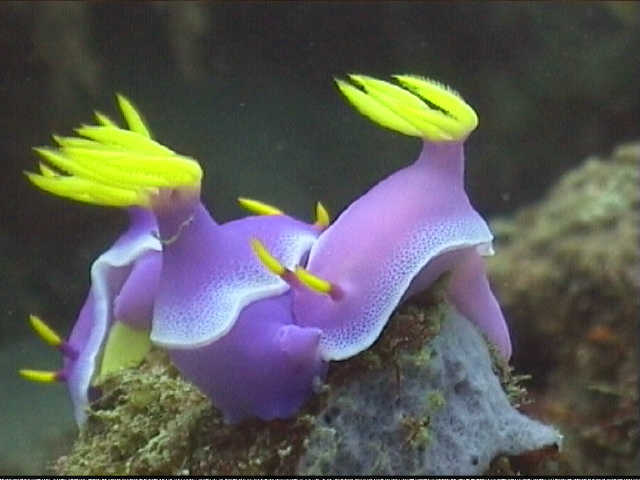 |
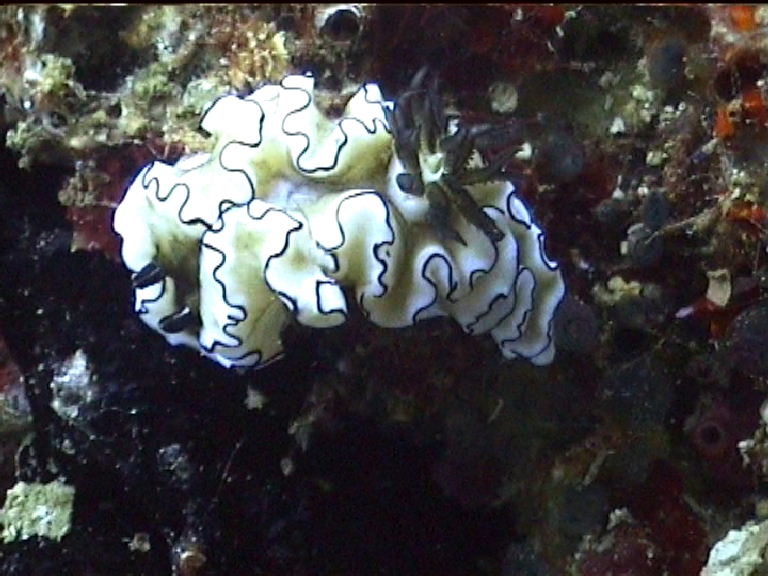 |
A Glossodoris nudibranch- very frilly. Most nudobranchs eat particular sponges or ascidians that are characteristic of their species, can't see if this one is easting anything identifying. |
| These are the eggs of Nudibranchs, not sure which type as they don't stay around to look after them. |
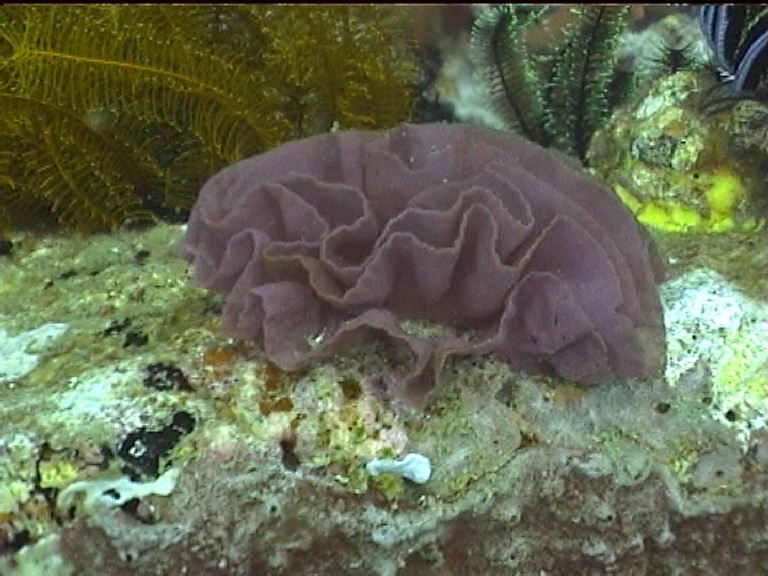 |
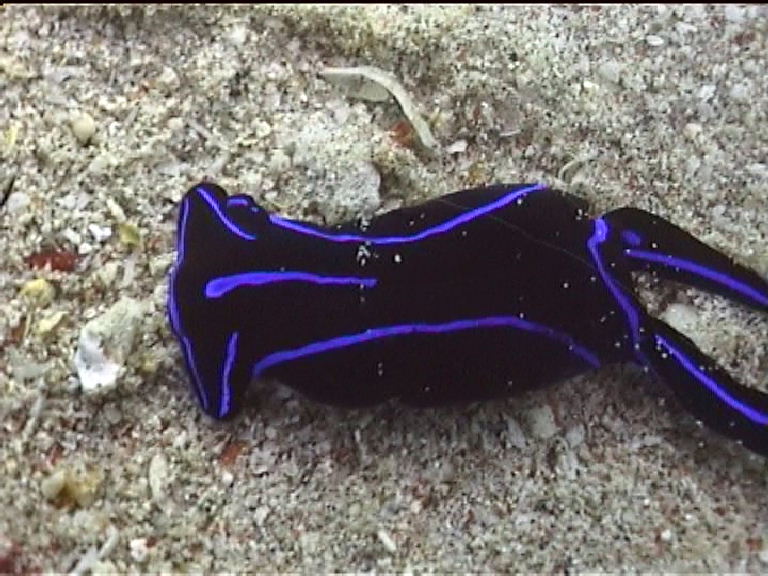 | Pauline spotted this one first, one of three on the sand on the bottom of Sabang Bay in just 8m of water. The book says it is a Chelidonura varians, The broad flap above the head is thought to help them burow in sand. We saw it on the dive when the camera did not work so I had to go back an hour later but all the subjects had waited for me ! |
| This is of Nembrotha genus without doubt but what species ? - no idea. Nembrotha nudibranchs cannot fully retract the gill structure, it always waves around like a tree |
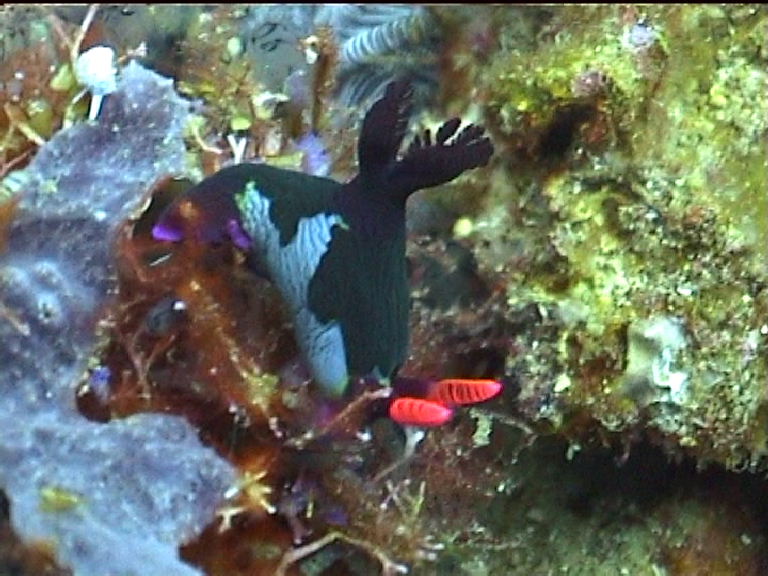 |
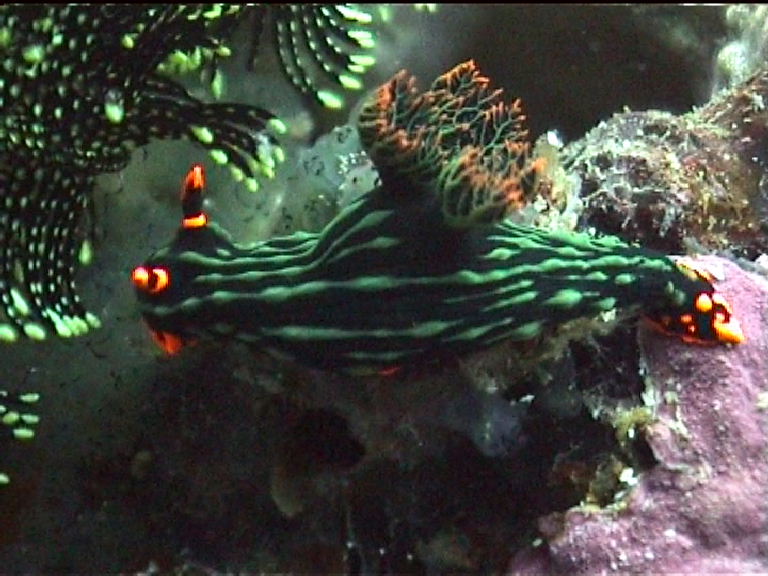 |
Another Nembrotha at Sinandigan, maybe N.kubaryana
There is another group of Nudibranchs with long tassles all along their bodies, we saw a few but never got a good picture - a reason to go back for more <G> |
| A Phyllidia genus, these ones have the gills hidden along the sides under the edges so not visible. | 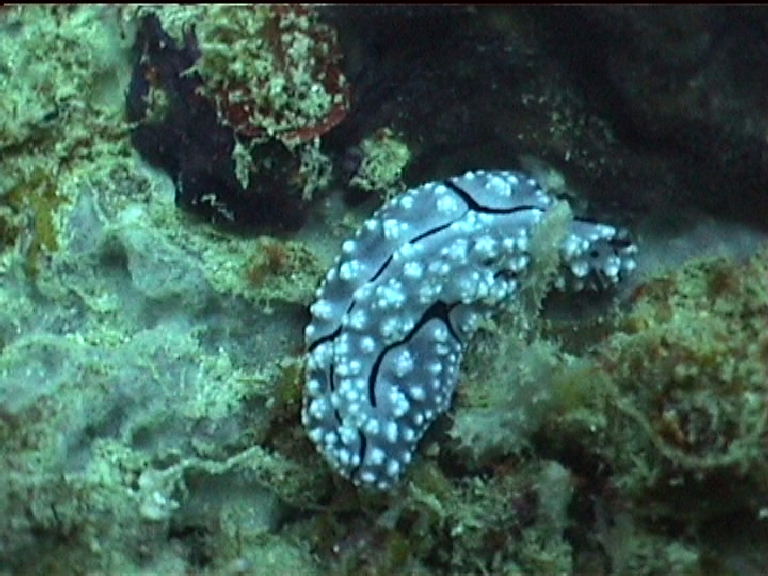 |
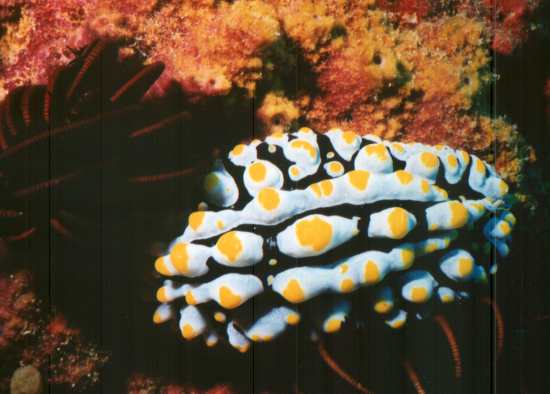 |
<---- Probably Phyllidia varicosa Can't tell you much about these two below, not even sure where I saw them. |
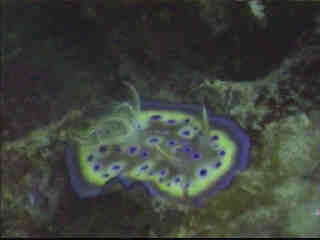 But I know this Chromodoris Kunei was just off Borocay But I know this Chromodoris Kunei was just off Borocay | 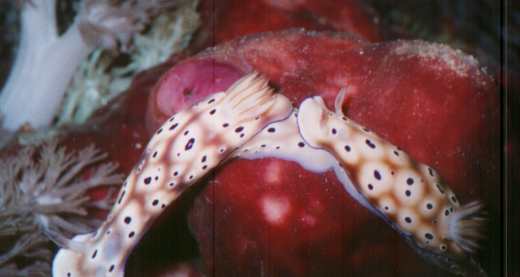 |









 But I know this Chromodoris Kunei was just off Borocay
But I know this Chromodoris Kunei was just off Borocay